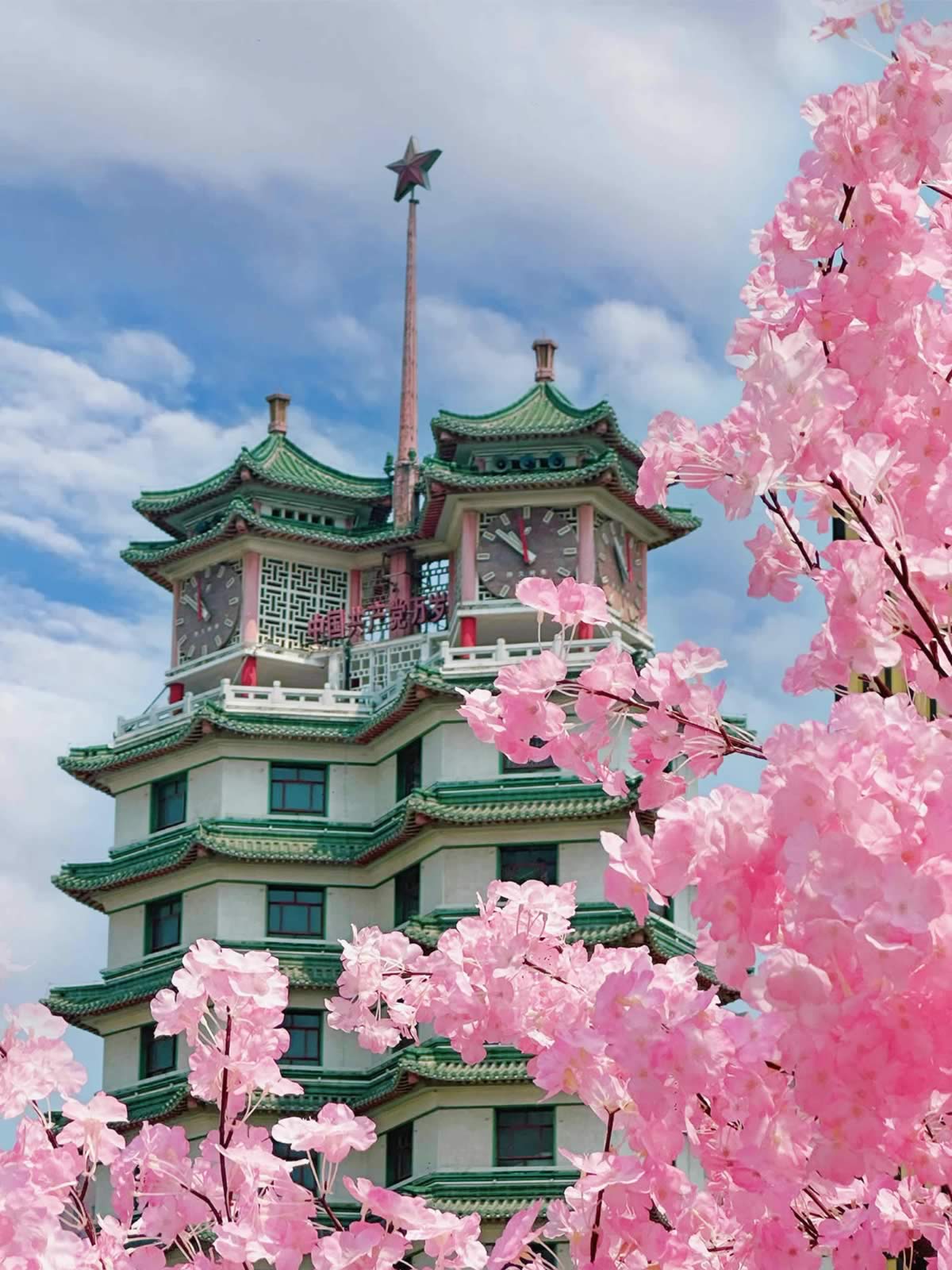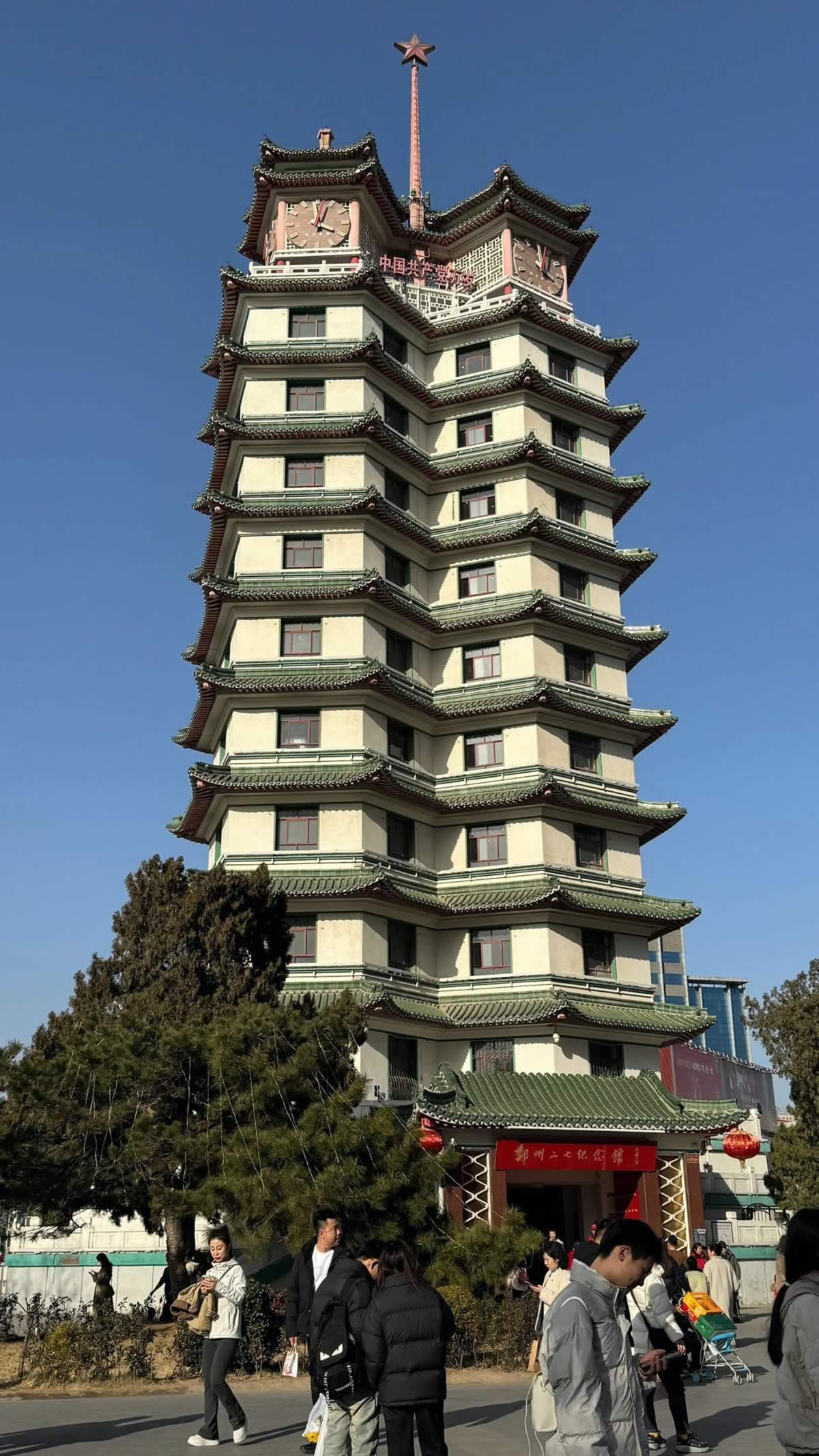At the heart of Zhengzhou stands the iconic Erqi Memorial Tower, its distinctive twin spires silently narrating the city's revolutionary legacy. More than just a landmark, it's a living chronicle of China's workers' movement.
Monument of Revolution
Built in 1971 to commemorate the 1923 Beijing-Hankou Railway Workers' Strike (known as the "February 7th Movement"), this "youngest national cultural heritage site" embodies proletarian valor through its hybrid architecture. The hourly chimes of "The East Is Red" still resonate across the city.
Architectural Synthesis
The 14-tiered twin towers (representing February 7th) fuse traditional Chinese pavilion aesthetics with socialist modernism. Its 63-meter frame - symbolizing the strike's 63rd anniversary - creates a striking silhouette against Zhengzhou's skyline. The panoramic view captures six decades of urban transformation.
Day & Night Contrast
By daylight, the white-and-green structure stands solemn amid bauhinia trees; at dusk, crimson lighting transforms it into a revolutionary beacon above the bustling Erqi Square. The museum inside preserves strike artifacts including pocket watches stopped at the exact time of the martyrdom.
Visitor Tips:
• Best vantage point: Southeast floral clock in the square
• Lighting schedule: 18:00 (winter)/19:30 (summer)
• Free entry with ID (closed Mondays)
To understand Zhengzhou's soul, begin with this "concrete epic poem" of workers' solidarity.



 Chinatodo
Chinatodo